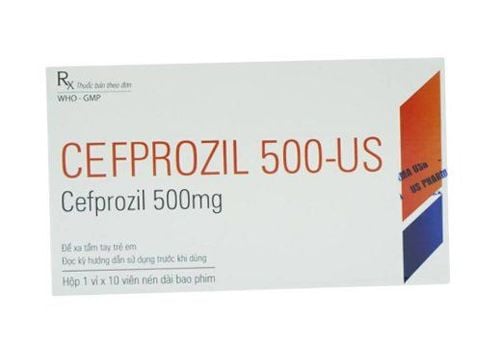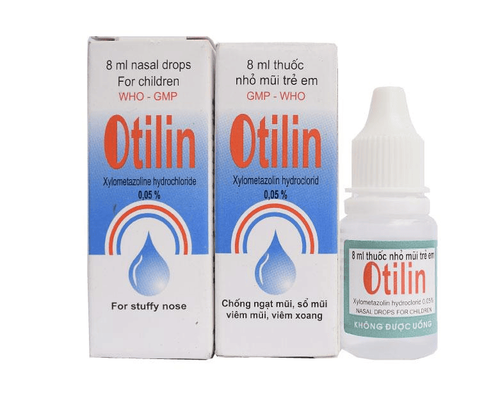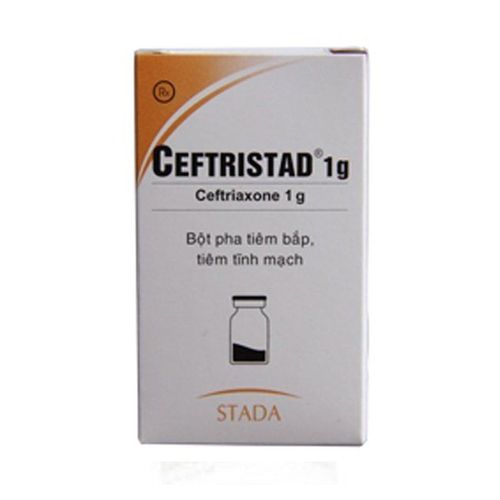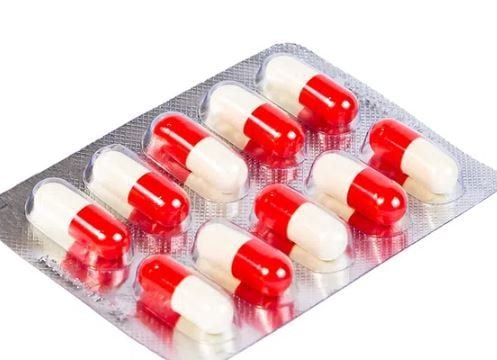This is an automatically translated article.
Cophacefpo 100 belongs to the group of antibiotics, indicated for the treatment of respiratory, urinary and other common bacterial infections. So how is Cophacefpo used? Please refer to the article below for more information about the effects and precautions when using this drug.1. What is Cophacefpo 100?
Cophacefpo 100 drug contains the main ingredient is Cefpodoxime with the strength of 100mg and the excipients are just enough provided by the manufacturer. The drug is prepared in the form of film-coated tablets, packaged in a box of 1 blister x 10 tablets.
2. Uses of Cophacefpo 100
Cophacefpo 100 is indicated for treatment in the following cases:
Treatment of respiratory infections: Sinusitis, pharyngitis, tonsillitis, community-acquired pneumonia. Treatment of urinary and genital infections: urinary tract infections, gonococcal infections. Treatment of skin and skin tissue infections. In addition to the effects of Cophacefpo 100, there are some contraindications to using this drug for patients such as:
Patients with a history of allergy to Cephalosporins, Penicillins and people with Porphyrin metabolism disorders. Patients with penicillin hypersensitivity, renal insufficiency and pregnant or lactating patients.
3. Dosage and how to use Cophacefpo 100
Cophacefpo 100 is made in the form of tablets, so patients use it orally. The drug should be taken with warm water or filtered water about 30-50ml, used after meals.
The drug should be swallowed whole, do not break, chew or crush the tablet before taking it because it may reduce the quality of the drug and the absorption of the drug in the body.
Below is the recommended dose of Cophacefpo 100:
Dosage for adults and children over 13 years old:
The usual dose is 200mg/time, 1 time every 12 hours. Pharyngitis, tonsillitis or urinary tract infections: the usual dose is 100mg/time, every 12 hours, taking the drug continuously for 5-10 days. Skin infections: the usual dose is 400mg / time, every 12 hours, continuously for 7-14 days. Urethral gonorrhea: a single dose of 200 mg, followed by treatment with oral doxycycline to prevent Chlamydia infection. Dosage for children under 13 years of age:
Acute otitis media in children from 5 months to 12 years of age: 5mg/kg (maximum no more than 200mg), every 12 hours or 10mg/kg (maximum) not more than 400mg) once a day, taking the drug continuously for 10 days. Bronchitis, tonsillitis in children from 5 months to 12 years old: 100mg dose, every 12 hours, continuously for 5-10 days. Dosage for patients with renal failure:
Patients with mild and moderate renal impairment: use the usual recommended dose of 200mg/time, every 12 hours. Patients with severe renal impairment (creatinine clearance <30ml/min): use the same dose as in mild and moderate renal impairment, but increase the dosing interval to 24 hours. For patients on hemodialysis, the dose interval is 3 times/week, taking the drug after dialysis. Dosage for patients with cirrhosis:
Use the same dose as healthy people 200mg/time, no need to adjust the dose for these patients.
4. What should be done to overdose Cophacefpo 100?
When an overdose occurs, the common symptoms are nausea, vomiting, epigastric pain and diarrhea. In the event of a severe toxic reaction from an overdose, hemodialysis or peritoneal dialysis may help remove Cophacefpo 100 from the body, especially when renal function is impaired.
5. Side effects of Cophacefpo 100
Before prescribing, doctors always weigh the benefits of Cophacefpo's effectiveness more than the risk of side effects. However, some cases when using Combitadin may still occur undesirable effects such as:
Digestive disorders such as nausea, vomiting, diarrhea, abdominal pain, headache. Allergic reactions such as rash, urticaria, itching. Anaphylaxis, joint pain, mild fever. Jaundice due to cholestasis, increased or decreased liver enzymes ALT and AST. Discontinue use and inform your doctor about side effects that occur while taking the drug for advice to reduce the dose or replace other therapy if necessary.
6. Cophacefpo 100 . drug interactions
Please list and inform your doctor about all the medicines you are taking to avoid possible interactions when combining different drugs. Some interactions with the drug Cophacefpo 100 when used in combination such as:
Antacids: Concomitant use of high doses of antacids (such as sodium bicarbonate and aluminum hydroxide) reduces peak plasma concentrations by 24% and decreases absorption rate of 27%. Concomitant administration of high doses of H2 blockers reduced peak plasma concentrations by 42% and extent of absorption by 32%. Probenecid: Similar to other beta-lactamase antibiotics, renal excretion of Cophacefpo 100 is inhibited by probenecid. As a result, plasma concentrations of this drug are increased to 20% of the normal range. Nephrotoxic drugs: although nephrotoxicity has not been observed with Cophacefpo 100 alone, renal function should be closely monitored when co-administered with drugs known to be potentially nephrotoxic.
7. Some notes when using Cophacefpo 100
Here are some notes when using Cophacefpo 100 to help achieve the effectiveness of the drug as well as reduce the risk of side effects:
Be cautious with patients who are sensitive to penicillin antibiotics, people with renal insufficiency, people with disorders porphyrin metabolism. For drivers, heavy workers, Cophacefpo 100 may cause the following effects: headache, dizziness, affecting the concentration of the above group. Use the correct dose of medicine indicated on the label, absolutely do not use an overdose because it can cause drug accumulation in the body. Pregnant women: The drug should only be used when absolutely necessary, when the benefits of the drug for the treatment effect outweigh the possible risks to the fetus. Nursing mothers: Cophacefpo 100 is excreted in breast milk at low concentrations, but may cause side effects such as intestinal flora disturbances. Therefore, consideration should be given to whether to discontinue nursing or to discontinue the drug, taking into account the importance of the drug to the mother. In the case of long-term use of Cophacefpo 100, repeated evaluation of the patient's condition is necessary to reduce the risk of overgrowth of non-susceptible organisms. Antibiotics should only be used to treat bacterial infections, not viral infections (such as the common cold). Patients need to take the medicine exactly as directed by the doctor, not stop taking it on their own, even though they may feel better at the beginning of the treatment. Above is the important information of Cophacefpo, carefully reading the instructions before use and strictly following the doctor's instructions will help patients use the drug effectively and safely.
Please dial HOTLINE for more information or register for an appointment HERE. Download MyVinmec app to make appointments faster and to manage your bookings easily.













